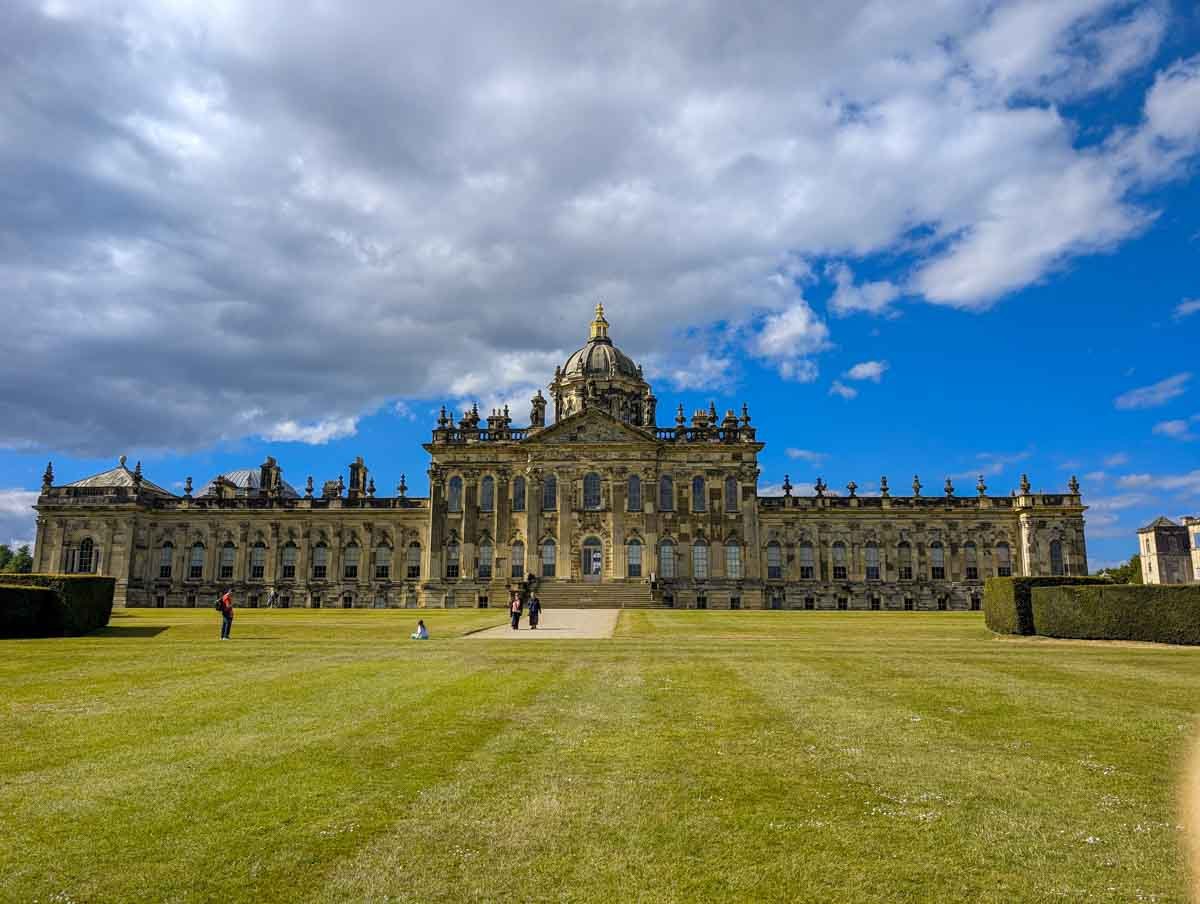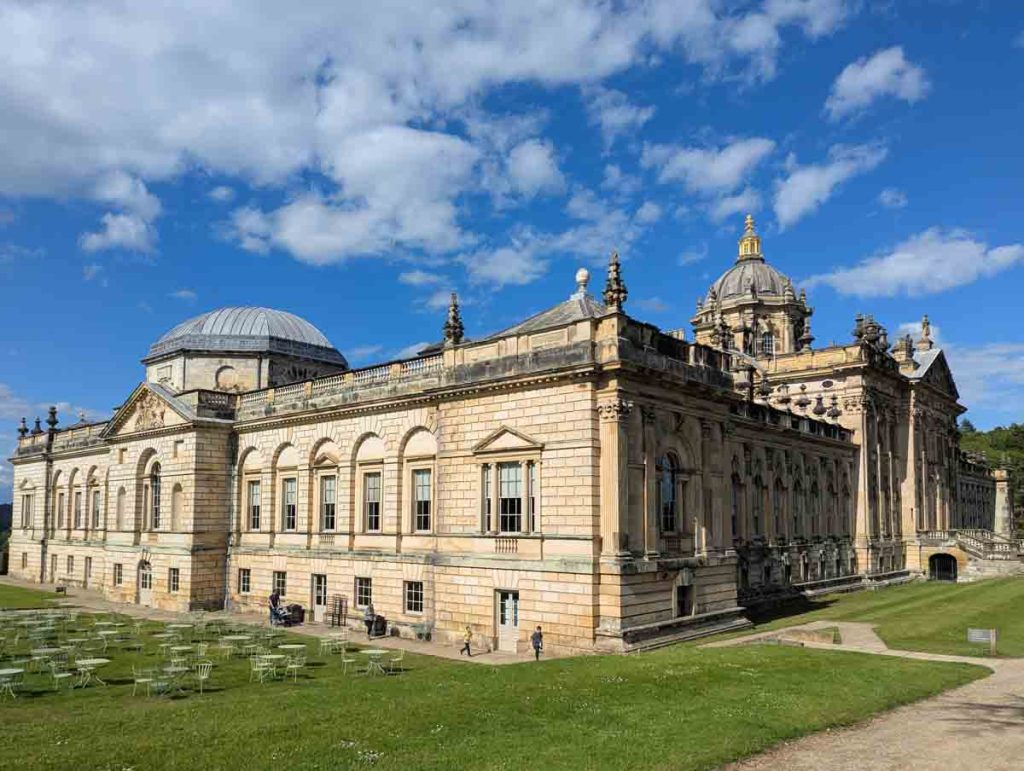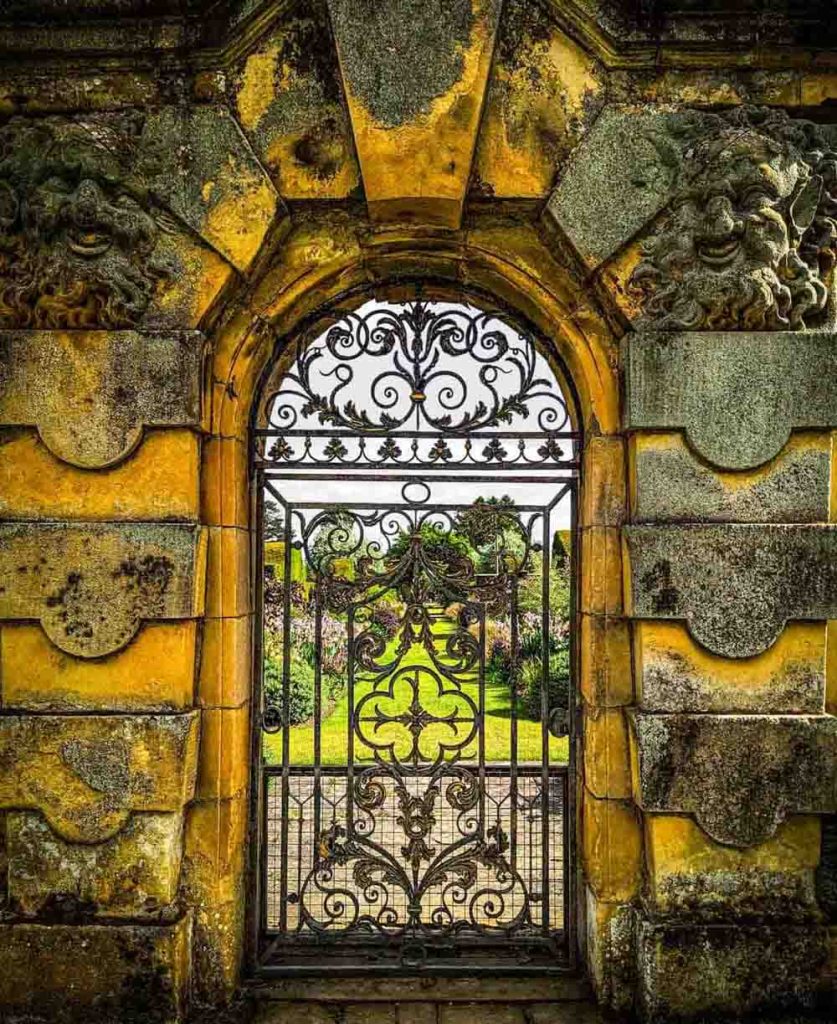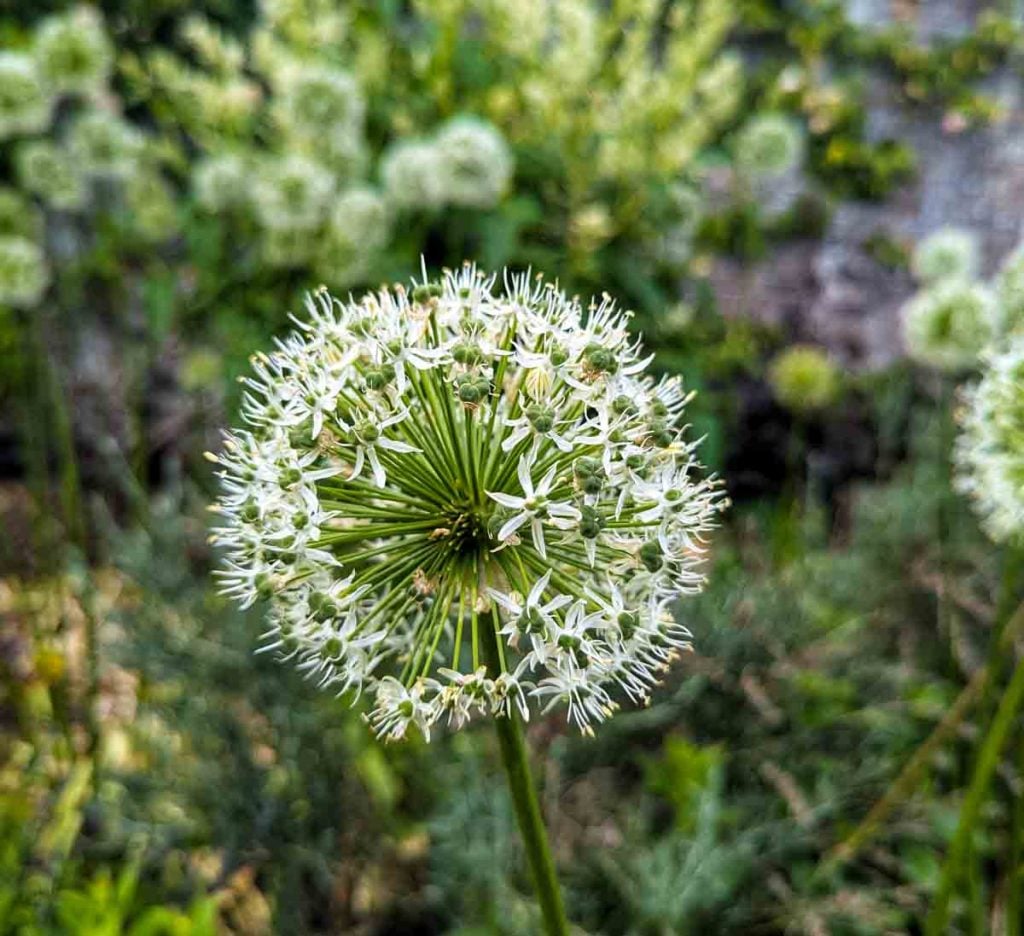Some places exist so vividly in our collective imagination that to finally arrive feels less like a visit and more like stepping onto a stage. Castle Howard is one of those places.
For years, I’ve known it through the screen, a magnificent backdrop for tales of aristocratic longing and romance. Today, I’m here to walk the grounds for myself, to discover the real story behind the fiction—a tale of audacious ambition, architectural genius, catastrophic fire, and remarkable resilience.
My journey begins, as it must, on the long, straight avenue that pierces the Howardian Hills. This is no ordinary country lane; it’s a piece of pure theatre.
For six kilometres, lime trees stand to attention, guiding you towards a distant Obelisk that marks the true entrance to this world.
This is the very approach that has introduced millions to this Yorkshire icon, whether as Charles Ryder’s first glimpse of Brideshead in Brideshead Revisited or as the Duke of Hastings’s ancestral home, Clyvedon Castle, in Bridgerton. The slow reveal is deliberate, a masterclass in building anticipation designed over 300 years ago.
As I park the car and pull on my boots, I’m not just here for a hike; I’m here to walk through the acts of one of Britain’s greatest architectural dramas.

A House Built on Drama: The Story of a Yorkshire Masterpiece
To understand Castle Howard, you first have to understand the sheer audacity of its creation. This isn’t just a house; it’s a statement.
It’s a story told in three distinct, dramatic acts: a theatrical birth, a century of conflicted creation, and a near-death experience that ultimately forged its modern identity.

The Playwright’s Palace: An Unlikely Genesis
The story begins in 1699 with Charles Howard, the 3rd Earl of Carlisle. A man of considerable ambition and political skill, he decided the old Henderskelfe Castle on his estate simply wouldn’t do.
He needed something to reflect his status, something magnificent. In a move that must have shocked London society, he bypassed the leading architects of the day and instead handed the commission to a friend from his political circle, the Kit-Cat Club: Sir John Vanbrugh.
Vanbrugh was a soldier, an adventurer, and a celebrated playwright, but he had never designed a building in his life.
What he lacked in technical skill, however, he made up for with a playwright’s sense of drama and a vision inspired by the grand Baroque palaces he had likely seen while imprisoned in France as a suspected spy.
To turn his theatrical ideas into a structural reality, he enlisted the help of Nicholas Hawksmoor, a brilliant and experienced architect who had trained under Sir Christopher Wren.
Together, this dynamic duo created something England had never seen before in a private home: a masterpiece of the English Baroque style.
It was bold, sculptural, and dramatic, with a colossal central dome—a feature added late in the design process—that gave it the air of a grand cathedral rather than a country seat.

A Tale of Two Wings: A Century of Creation
Vanbrugh’s vision was so grand that it outlived both him and his patron. Construction took over 100 years, spanning the lifetimes of three Earls.
The East Wing and the magnificent central block, crowned by its dome, rose relatively quickly, taking shape in just under a decade.
But the 3rd Earl became increasingly distracted by another grand project: the landscaping of the grounds. Vanbrugh pleaded with him to finish the house, but when both men died—Vanbrugh in 1726 and the Earl in 1738—the house was famously incomplete, lacking its entire West Wing.
This delay had a fascinating consequence. By the time the 4th Earl commissioned his son-in-law, Sir Thomas Robinson, to finally complete the house in the 1750s, architectural tastes had shifted dramatically.
The flamboyant, emotional Baroque of Vanbrugh was out; the restrained, classical, and highly fashionable Palladian style was in.
The result is the wonderfully unique building we see today: a house with two completely different wings. It is spectacularly asymmetrical, a physical timeline of 18th-century design frozen in stone.
This isn’t a flaw; it’s the house’s story, a visible dialogue between two competing architectural visions.

Trial by Fire, Forged in Film: Destruction and Rebirth
The house’s greatest drama was yet to come. On the morning of 9 November 1940, a chimney fire broke out in the South-East Wing.
Fanned by strong winds, the blaze tore through the building. The magnificent dome, the jewel in Vanbrugh’s crown, collapsed in a fireball into the Great Hall below.
In a few short hours, over 20 rooms, including priceless staterooms filled with art collected on the Grand Tour, were destroyed. Nearly a third of the building was left a blackened, roofless shell, open to the Yorkshire skies.
The only saving grace was the quick action of the fire service and a group of schoolgirls from Queen Margaret’s School, who had been evacuated there during the war and bravely salvaged what treasures they could.
For twenty years, the house remained in this wounded state. It was the determination of George Howard, who inherited the estate after his two brothers were killed in WWII, that saved it from ruin.
He and his wife, Cecilia, opened the house to the public in 1952 and began the painstaking process of restoration. The dome was rebuilt between 1960 and 1962, but the house’s rebirth is inextricably linked to its second life on screen.

In 1981, Granada Television chose the still partially derelict Castle Howard as the setting for Brideshead Revisited. The show was a global phenomenon, and it catapulted the house to international fame.
This “Brideshead effect” was transformative. The production company even funded the restoration of the fire-damaged Garden Hall to use as a set.
The subsequent wave of tourism provided the vital income needed to continue the long, slow work of healing. This symbiotic relationship between disaster, media, and preservation continues today with the “21st Century Renaissance,” an ambitious project to restore rooms left as shells since 1940, including the magnificent Tapestry Drawing Room, which is set to reopen to the public in 2025.
The fire was a tragedy, but it paradoxically set the stage for the house to be reborn, saved by the very fictional stories it helped to tell.

A Landscape of Imagination: My Walk Through the Grounds & Follies
With the house’s dramatic history echoing in my mind, I set off from the car park. You don’t need to buy a ticket to the main grounds to experience the majesty of the wider estate; a network of public footpaths allows you to immerse yourself in this incredible landscape for free.
My route today is a classic 4-mile (6.5 km) circular walk, a journey through what the curator, Dr. Christopher Ridgway, has called a “built capriccio”—a real-life landscape painting, where every view is composed and every structure is a carefully placed piece of art.

Starting from the Obelisk, turn right I follow the avenue away from the house, the road verges wide and grassy. After another turn right the first stop is the charming estate village of Coneysthorpe, its neat stone cottages arranged around a village green.
From here, a track leads me past ancient oaks towards the open parkland. After passing through the woods, then, the first great reveal. Across the rolling hills of the Howardian landscape, two extraordinary structures start to appear on the horizon: the elegant, colonnaded Temple of the Four Winds and the solid, brooding form of the Mausoleum.

A gentle climb brings me to the Temple of the Four Winds. Designed by Vanbrugh as a refined garden retreat for reading and refreshment, it was completed after his death.
With its four porticos and central dome, it was inspired by Palladio’s famous Villa Rotonda in Italy. Standing on its terrace, the views are breathtaking, stretching for miles across the estate.
Below the temple, a cellar was built where servants would prepare food to be served to the family above, a perfect example of 18th-century aristocratic leisure.
The path then leads down to the New River Bridge. This graceful, high-arched stone bridge is more than just a crossing; it’s a viewing platform, perfectly framing the Temple and Mausoleum in a composition that would make the landscape painter Claude Lorrain proud. It’s one of the best photo opportunities on the entire estate.

Looking out away from Castle Howard from the bridge, the Mausoleum dominates the skyline. Designed by Nicholas Hawksmoor, this magnificent structure rises 90 feet into the air, supported by a colonnade of 20 pillars.
It is one of the finest free-standing mausoleums in northern Europe and remains the private burial place of the Howard family, which is why it is not generally accessible to the public.
Its powerful, almost ominous presence is a vital part of the landscape’s romantic character, a final, solemn statement in this vast outdoor gallery.
The return leg of my walk takes me past another of Hawksmoor’s enigmatic creations, the Pyramid of 1728.
From here, the path leads back through woodland, eventually rejoining the grand Avenue. The final stretch is a walk back towards the house, with the magnificent dome growing ever larger, before turning at the Obelisk to return to the car park.

Inside the Gates: A Tour of the House & Gardens
While the wider estate offers a magnificent free walk, to truly understand Castle Howard, you must step inside the ticketed grounds.
Here, the curated splendour of the house and its immediate gardens reveals the heart of the Howard family’s vision.
The Staterooms: A Walk Through History
Stepping inside Castle Howard itself is to walk through 300 years of art and history. The experience begins in the Great Hall, arguably Vanbrugh’s masterpiece.
It is a space designed for pure drama, rising 70 feet to a magnificent painted dome. The original ceiling, depicting the Fall of Phaeton, was lost when the dome collapsed during the 1940 fire, but it has since been painstakingly recreated, once again filling the hall with baroque grandeur.
Many of the rooms are part of the “21st Century Renaissance,” a major restoration project bringing fire-damaged areas back to life.
The centerpiece is the Tapestry Drawing Room, which for decades was a hollowed-out shell. Now, for the first time since 1940, it has been returned to its 18th-century glory, with four priceless tapestries depicting the seasons, woven by John Vanderbank in 1706, restored to their rightful place.
The 135-foot Long Gallery, which completes the West Wing, has been rehung to showcase the family’s incredible art collection.
It features Italian and Grand Tour paintings, including famous Roman scenes by Pannini, alongside portraits of generations of the Howard family by artists like Kneller and Lely. Other highlights include the Grand Staircase, lined with antique sculptures collected by the 4th and 5th Earls on their travels, and a series of lavishly decorated bedrooms, such as Lady Georgiana’s Bedroom, which offer a glimpse into the aristocratic life of the 19th century.

The Gardens: A Living Landscape
The 1,000 acres of gardens and parkland are a masterpiece of landscape design, filled with lakes, temples, and woodland walks.
Immediately south of the house lies the South Parterre, a formal expanse of clipped yew hedges and grass terraces. Its focal point is the magnificent Atlas Fountain, an icon of Castle Howard.
Designed by William Andrews Nesfield for the Great Exhibition of 1851, its powerful jets are entirely gravity-fed from a reservoir in Ray Wood.
A short walk away is the 18th-century Walled Garden, a delight for any garden lover. This nine-acre sanctuary contains a stunning collection of roses, with over 2,000 varieties blooming in the Venus, Sundial, and Lady Cecilia’s gardens.
You can also explore an ornamental vegetable garden and admire the historic Satyr Gate, carved in 1705.

For a less formal experience, the winding paths of Ray Wood lead you through a woodland garden of international importance.
This tranquil space holds a remarkable botanical collection, including nearly 800 species of rhododendron, which create a spectacular display of colour in the spring.
The collection also features rare magnolias, hydrangeas, and maples, many grown from seeds brought back by the great plant hunters of the 19th and 20th centuries.

Stepping onto the Set: Castle Howard’s Starring Roles
As I walk, it’s impossible not to see the landscape through the lens of a camera. Castle Howard’s on-screen identity is now as much a part of its story as the Howard family itself. For many visitors, a trip here is a pilgrimage to a fictional world.
Forever Brideshead
The estate will forever be synonymous with Brideshead Revisited. Both the iconic 1981 TV series starring Jeremy Irons and the 2008 feature film used the house and grounds extensively, burning its image into the cultural consciousness.
When you stand before the magnificent Atlas Fountain on the South Parterre, you can almost see Sebastian Flyte lounging with his teddy bear, Aloysius. The Temple of the Four Winds, the Great Hall, the long corridors—they are all characters in Waugh’s nostalgic tale of love, loss, and faith.
A Diamond of the First Water
More recently, a new generation has been introduced to Castle Howard through the global Netflix phenomenon, Bridgerton.
In the series, the estate stars as Clyvedon Castle, the magnificent country seat of Simon Basset, the Duke of Hastings. The Great Hall, bedrooms, and follies all feature prominently, while the nearby village of Coneysthorpe played the part of Clyvedon Village.
The estate has fully embraced this new role, even offering dedicated Bridgerton filming location tours. This layering of narratives is fascinating; visitors today walk through a space that is simultaneously 18th-century Yorkshire, 1920s Oxfordshire, and Regency London.
The estate’s versatility has also seen it appear in Stanley Kubrick’s Barry Lyndon, the BBC’s Death Comes to Pemberley, and even Garfield: A Tail of Two Kitties, cementing its status as one of Britain’s most sought-after filming locations.

Your Castle Howard Adventure: A Practical Guide for Walkers and Visitors
Inspired to follow in my footsteps? Planning a visit to Castle Howard, whether for a walk or a full day out, is straightforward. Here is everything I’ve learned to help you plan the perfect trip.
The Castle Howard Walk
- Start/Finish: Castle Howard Visitor Car Park (Postcode: YO60 7DA).
- Distance: Approximately 4 miles (6.5 km) for the main circular route.
- Time: Allow 2.5 to 3 hours to walk at a leisurely pace and take in the views.
- Difficulty: Easy to moderate. The route follows public footpaths, estate lanes, and grassy tracks. It can be muddy after rain, so walking boots are recommended.
- Key Waypoints: Obelisk → Coneysthorpe Village → Views of the Great Lake → Temple of the Four Winds → New River Bridge → Distant view of the Mausoleum → The Pyramid → Return via the Avenue.
Here is a downloadable GPX Route of my Castle Howard walk if you want to add it to a device.

Essential Visitor Information
Tickets & Opening Times
You can purchase ‘Gardens Only’ or the more inclusive ‘House & Gardens’ tickets. It’s highly recommended to pre-book online via the official website, particularly during peak times.
The House is typically open from April to October, with a special Christmas dressing from November to January . The Grounds are open for most of the year. For the most current prices and opening hours, always check the official Castle Howard website.
Getting There & Parking
Castle Howard is located at YO60 7DA, 15 miles north-east of York and just off the A64 . A large, free visitor car park is available, which serves as an excellent starting point for walkers.
For those using public transport, the Castle Line bus service operates from York. Another option is to take a train to the nearby town of Malton and then a taxi to the estate .
Dog Policy
Dogs are very welcome throughout the grounds and on the wider estate footpaths, but they must be kept on a short lead . Well-behaved dogs are also allowed inside the Courtyard Café, Coffee Shop, and Farm Shop, where water bowls are provided.
Please note that, with the exception of assistance dogs, pets are not permitted inside the House or the Skelf Island Adventure Playground .
Facilities & Refreshments
The Courtyard is the main hub and can be accessed without an entry ticket. Here you will find the Courtyard Café, a Coffee Shop, the Farm Shop, and toilets, making it a perfect spot to start or finish your walk. Seasonally, the Boathouse Café by the Great Lake is also open. If you prefer to bring your own food, picnics are welcome in designated areas .

A Final Reflection: More Than a House, A Story in a Landscape
As I make my way back up the Avenue, I turn for one last look. The dome of Castle Howard, reborn from the ashes, catches the late afternoon sun.
My walk today has been so much more than a ramble around a country house. It has been a journey through time, art, and imagination.
Castle Howard is not a static museum piece. It is a living, breathing entity, a testament to the vision of a playwright, the genius of his architect, and the resilience of the family that has been its steward for over 300 years.
It is a landscape designed to be experienced, to be walked through, and to be felt. It is a story of creation, destruction, and rebirth that continues to unfold, inviting each of us to step onto its stage and become part of its enduring drama.
Have you walked the grounds of Castle Howard? What part of its incredible story resonates most with you? Share your experiences in the comments below.
You may also like nearby Beningbrough Hall, The Gardens and Walking The Grounds







